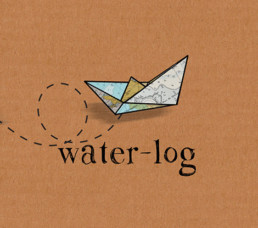From our first landfall in St Lucia on January 6th 2012 to our Panama Canal transit on January 26th 2013 we have had an incredibly varied sailing experience in the Caribbean Sea. Our twelve month tour of this area took us to 15 different countries in which we saw everything from perfect desert islands to city skylines of towers, tiny fishing villages to megayachting centres, snorkeling in turquoise waters to a road trip cross-country.
And yet in many ways we barely scratched the surface. Several of our earlier plans involved us cruising down the coasts of Belize, Guatemala, Honduras and Nicaragua, none of which we managed to visit on the Caribbean side. Additionally we only barely dipped our toes in the waters of Mexico’s spectacular Yucatan Peninsula and the Riviera Maya which helps to fuel our desire to return to Mexico on the Pacific side.
However, a lot of what we learned surprised us as being very different from what we had expected or what the stereotypical view back home of the Caribbean is.
For example – bribes. We had been both told and warned that bribery is both rife and necessary when dealing with boat and customs officials throughout the Caribbean. This, in our experience, has proved to be utterly false. In fact, the only stories we have ever heard where people have been asked for bribes have, without exception, involved particularly obnoxious, argumentative or difficult cruisers. These tend to be the sorts of people always asked for a bit of extra money.
Second example – the officials themselves. All over the cruising world there is a common gripe about how difficult / expensive / lengthy the paperwork may be upon entering or leaving a country by boat. However, with our language skills of both French and Spanish at a real minimum, we have found the officials all over the Caribbean to be incredibly helpful and understanding (anyone remember our story of the officials in Cuba actually insisting that we SHOULDN’T be given a $200 fine for scraps of old marijuana leaves at the bottom of a bilge?). In Panama in particular a lot of people moan about have to pay $190 for a cruising permit which lasts a year. However it is valid for such a long time and for us being here from June 2012 until late February 2013 this is really a very small cost.
Third example – beaches. Everyone back home assumes that Caribbean sailing is ALL about anchoring off sandy beaches in turquoise waters with gently swaying palm fronds. True, we do include photos of such things as we know that’s what you all clamour for. However, with the exception of the San Blas islands in Panama, this type of scenery has been few and far between. We really do relish the variety of land and seascape here and have found that the vast majority of islands we’ve visited have actually been mangrove rather than sand. Also, the majority of sand beaches are always on the windward side of an island, i.e. exactly the side the you WOULDN’T anchor off.
Fourth example – the other people we meet. Strangely for us, we did not meet another cruising boat with intentions of circumnavigation until we got to Cuba. The whole of the East Caribbean was spent in the company of charter boats or people out playing with their summer boat toys. So it’s perhaps not that unusual that as soon as we got to Cuba we felt a real shift in the types of people we were meeting and began to make really lasting friends and build up a large network of cruising buddies. This is a greatly international tribe although we do tend to meet more Americans in the South West Caribbean. This makes perfect sense really as the Caribbean sea is to them what the Mediterranean Sea is to the British and Europeans.
Fifth example – the cost of food. Specifically things like fruits that are native to the Caribbean (pineapples, papayas, bananas etc) varied MASSIVELY in cost depending on which countries we were in. Throughout all of the Eastern Caribbean these things were extortionately expensive as they were all sold to hotels or shipped overseas to Tescos! The price of a pineapple was a ridiculous $6 in Guadeloupe but a much more reasonable $1.50 in Panama. The limes in Cuba were tiny, hard and cost around $1 each but in Mexico you could get a kilo of big, juicy ones for $0.25. A few fresh tomatoes in St Lucia were a real luxury item but we were able to have them all the time in the South West Caribbean.
Final example – normaility. Yes it’s largely English speaking and yes there is clearly lots of money and sunshine in the Caribbean but you’re crazy if you think that anything will be easy to manage or run like you would at home in the UK or USA. Case in point, Panama has no national postal service, Cuba took 5 months to send our families the postcards we sent in April, Mexico’s ATMs hated my bank cards, and good luck trying to have a skype conversation with anyone. Frankly, we’re quite amazed that we’ve been able to do anything regarding the management of our lives back home from here as communications have been a constant source of difficulty and far from what you want to focus your energy on when enjoying this sort of lifestyle.
We never planned to spend as long as we did in the Caribbean and, though we enjoyed it immensely, we’re glad to be through to the Pacific side and give some attention to mainland Central America in place of islands. We’re keen to explore the possibility of fewer countries and stops but for longer periods in order to learn more about each place.
